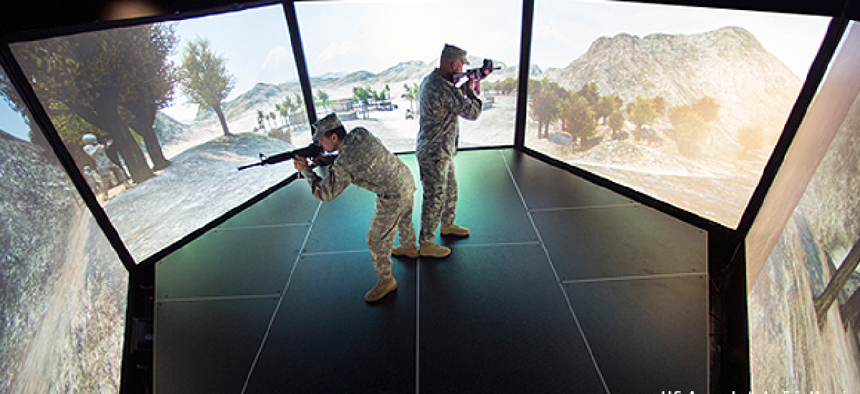Data-rich weapons simulations helps Army cut costs


Connecting state and local government leaders
Engineers at the Army’s Picatinny Arsenal set up a sophisticated simulation facility that helps cut the time and cost of engineering weapons improvements.
Engineers at the Army’s Picatinny Arsenal have set up a testing environment that taps a combination of artificial intelligence, cameras and ballistics databases to test high-performance improvements in the latest rifles and infantry weaponry the service has under development.
The New Jersey-based facility is the headquarters of the United States Army Armament Research, Development and Engineering Center, where ballistics and weapons experts can refine and engineer weapons improvements, such as where a new sight should be mounted for best accuracy.
The facility is also helping the Army cut the time and cost of the small arms engineering process in order to get the best hardware into the hands of soldiers as quickly as possible.
“Users can come here and test a weapon or the new ammunition before it is even made,” Clinton Fischer, a mechanical engineer with the Weapons Technology Branch, told the Arsenal’s public affairs office.
“In traditional development, they would have to first manufacture the weapon or the ammunition for it. Because there is no production line for it, it could be a thousand dollars a round,” he added. “Here, we just make it, shoot and get data.”
Much of the data is being generated by the Simulated Weapon Environment Testbed, or SWeET, which can set up and project visualizations of various shooting environments, including rain or fog, urban or jungle.
The test bed is equipped with five cameras and computers behind the screens that display simulated scenarios, with a sixth computer to control them. Using the simulations and the computer power, the facility can capture data on projectile ballistics as well as impact effects.
A major advantage of SWeET, according to testers, is that it can gather large amounts of data on prototypes of new weapons, limiting the need – and the costs – of manufacturing multiple weapons during development.
Simulations are never perfect, according to the researchers. The virtual environments are projected on two-dimensional screens, where they might lose some accuracy. Recoil simulation is about 90 percent accurate, for instance.
Still, overall feedback on SWeET, with its speedy data output and realism, remains positive.
“We had some soldiers come in and verify that our ranges were accurate,” said Keith Koehler, a mechanical engineer at the Weapons Technology Branch. “We would pull up a target at 348 meters and ask ‘How far away did this guy look to you?’ and they say ‘350 meters.’ So, even we didn’t expect that kind of realism.”
The Army’s involvement with virtual environments and simulations is not a new development.
In 2013, Picatinny engineers modified software from the America’s Army videogame to develop the Virtual Environment TestBed, a system to assess gunner performance.
Picatinny engineers have also tested weapons with a commercial program designed to train police officers. But the program generated a limited amount of data, leading to more costly testing projects. The new system modifies the police training program using different code and offers realistic target behavior.
“There are lots of simulators out there, but they’re limited in their capability, and each one is made to train a specific situation,” Koehler said. “With SWeET, we’re trying to take all those types of simulations and combine them. I don’t think there is anything out there yet that can test all these capabilities.”




